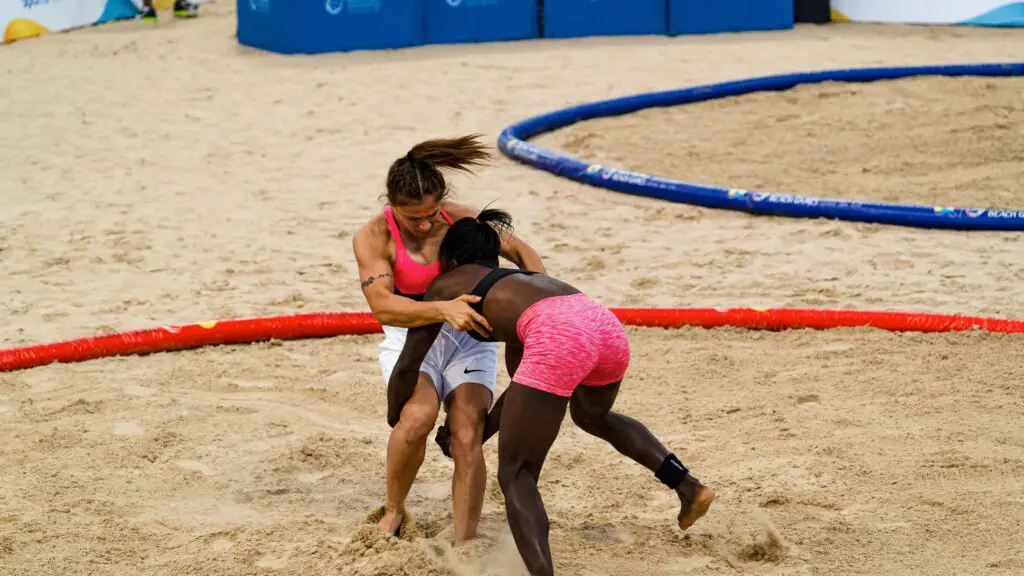Long hair in wrestling has been a topic of debate for many years. While wrestling organizations may have their own specific rules and regulations regarding hair length, there are generally accepted standards that apply to most wrestling competitions. In this article, we will delve into the topic of long hair in wrestling and explore various perspectives and considerations.

Firstly, it’s important to note that wrestling is a physically demanding sport that requires athletes to engage in close physical contact with their opponents. This close contact can increase the risk of hair being pulled or tangled, which can potentially lead to injury. As a result, many wrestling organizations have established rules and guidelines regarding hair length to minimize these risks.
One common rule in wrestling is that long hair must be contained in some way to prevent it from interfering with the match. This often involves tying the hair back into a tight bun, braid, or other appropriate hairstyle that keeps the hair secured and out of the wrestler’s face. This rule is generally applied to both male and female wrestlers, as hair length does not discriminate by gender.
The rationale behind this rule is to prioritize the safety of the wrestlers. Long hair that is left loose during a match can become a hazard, as it can obstruct the wrestler’s vision or be used by their opponent as a grip to gain an unfair advantage. By requiring long hair to be contained, wrestling organizations aim to reduce the risk of injury and ensure a level playing field for all wrestlers.
Another consideration regarding long hair in wrestling is hygiene. Wrestling is a contact sport that involves close physical contact with opponents and the mat. Long, loose hair can potentially accumulate dirt, sweat, and other debris, which can create unsanitary conditions and increase the risk of infection. By requiring long hair to be tied back or otherwise contained, wrestling organizations aim to promote proper hygiene practices among wrestlers and maintain a clean and safe environment for competition.
On the other hand, some argue that long hair should be allowed in wrestling without any restrictions. They argue that athletes should have the freedom to express themselves through their appearance, including their hair length. For some wrestlers, long hair may be a cultural or personal preference, and restricting it may be seen as limiting their individuality.
In addition, there are cases where wrestlers may have religious or cultural reasons for keeping their hair long. For example, in some Sikh and Rastafarian traditions, long hair holds religious significance and is considered a part of their identity. Requiring these wrestlers to cut their hair or contain it in a certain way may infringe upon their religious or cultural rights.
Some opponents of hair length restrictions in wrestling also argue that there are other ways to address safety concerns without resorting to hair length rules. For example, wrestlers could wear hair coverings or use other protective gear to prevent their hair from interfering with the match. Additionally, opponents argue that wrestlers should be trained to defend against hair grabs or other hair-related tactics used by their opponents, rather than relying on hair length rules as a solution.
In recent years, there have been cases where wrestlers with long hair have faced controversy and even legal battles over hair length rules. Some wrestlers have challenged these rules as discriminatory or in violation of their religious or cultural rights. These cases have sparked discussions and debates within the wrestling community and have led to some organizations reevaluating their hair length policies.
In conclusion, the topic of long hair in wrestling is complex and multifaceted. While there are valid arguments on both sides, the safety and hygiene concerns associated with long, loose hair in wrestling cannot be ignored. Wrestling organizations have established hair length rules to minimize the risks of injury and maintain proper hygiene standards in the sport. However, there are also considerations regarding individuality, cultural and religious rights, and alternative ways to address safety concerns.
As the sport of wrestling continues to evolve, it is important for organizations